Osteoarthritis is a group of diseases that occur for different reasons, but are similar in clinical manifestations and course. At the heart of all osteoarthritis is the defeat of the components of the joint. Osteoarthritis is a progressive disease with impaired function of the affected joint. Osteoarthritis of the knee joint (gonarthrosis) is a disease in which the cartilage, synovial membrane, ligaments, periarticular muscles of the knee joint are damaged. Osteoarthritis of the knee joint, the treatment of which requires an integrated approach, also requires your attention. And also at least a basic understanding of why and how the disease progresses.
Gonarthrosis: causes
The causes of osteoarthritis of the knee joint can be:
- Joint injuries: According to the scientific literature, approximately one third and probably half of arthrosis cases are preceded by trauma. A person may accidentally trip on the street or damage a joint while playing sports. First, there will be sharp pain, which will eventually dull and become slightly painful, but does not cause much discomfort. Usually, in most cases, the joint will soon heal on its own and show no signs of injury. But in rare cases, this unfavorable coincidence can provoke the development of osteoarthritis.
- Long-term joint overload: It is believed that those people whose profession is associated with prolonged excessive stress on the joints (professional athletes, postmen), may face the development of early osteoarthritis of the joints.
- Inflammation of the joints (arthritis of the knee joint): when inflammation of the joint occurs biological and morphological changes, blood flow is disturbed, therefore arthritis causes osteoarthritis of the knee joints (secondary arthrosis).
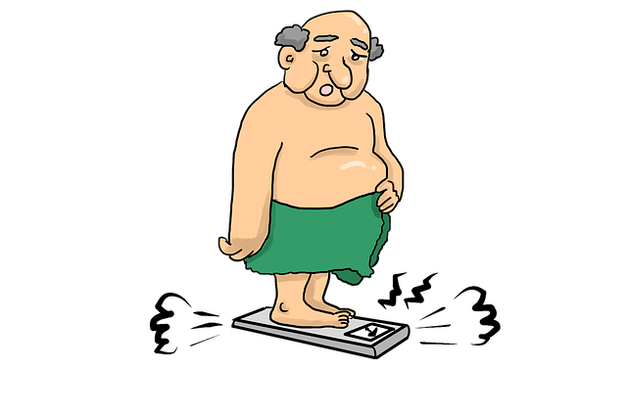
Additional risk factors
- Heredity. Usually osteoarthritis of the joints is not directly inherited, but the "catalysts" in the development of osteoarthritis can be the peculiarities of metabolism, the structure of cartilage tissue, which are simply genetically transmitted. Also, the possibility of osteoarthritis can occur if a person hasjoints or underdevelopment, birth trauma.
- Overweight. Being overweight is an "aggravating" circumstance in the development of osteoarthritis: that is, it is not directly related, but weight gain has a large load. It should be remembered that obese people have more severe osteoarthritis of the knee than others.
- Chronic stress. It is a well-known fact that during excessive experiences the adrenal glands secrete "stress hormones", due to which there is a deterioration of the blood supply and a decrease in the production of hyaluronic acid, which is an important component for the normal functioning of the joint. Circumstances may cause osteoarthritis.
Symptoms of gonarthrosis
- Pain. One of the initial and main symptoms of osteoarthritis of the knee is pain in the knee joint. It is noteworthy that the pain in the knee will appear only during exercise: when walking, running, squatting and lying down, this pain will disappear and after a while it will disappear completely (until the next load).
- Cracking in the joint. Unlike the "crunching" of the joints of healthy people, the crunching of the joints affected by osteoarthritis has a different tone: it is rough and "dry".
- Stiffness of the joints. Osteoarthritis of the knee joint of the 1st degree is usually not expressed in stiffness as in the following degrees. But as the progression progresses, the range of motion in the affected joint decreases significantly.
- Deformation of the knee joint. With the progression of gonarthrosis, pathological formations develop in the joint - bone spines. It is because of them that the appearance of the joint may be different from that of a healthy one. In addition, the appearance of the joint may be somewhat "bulky", this is due to the excessive accumulation of intra-articular fluid (synovitis).
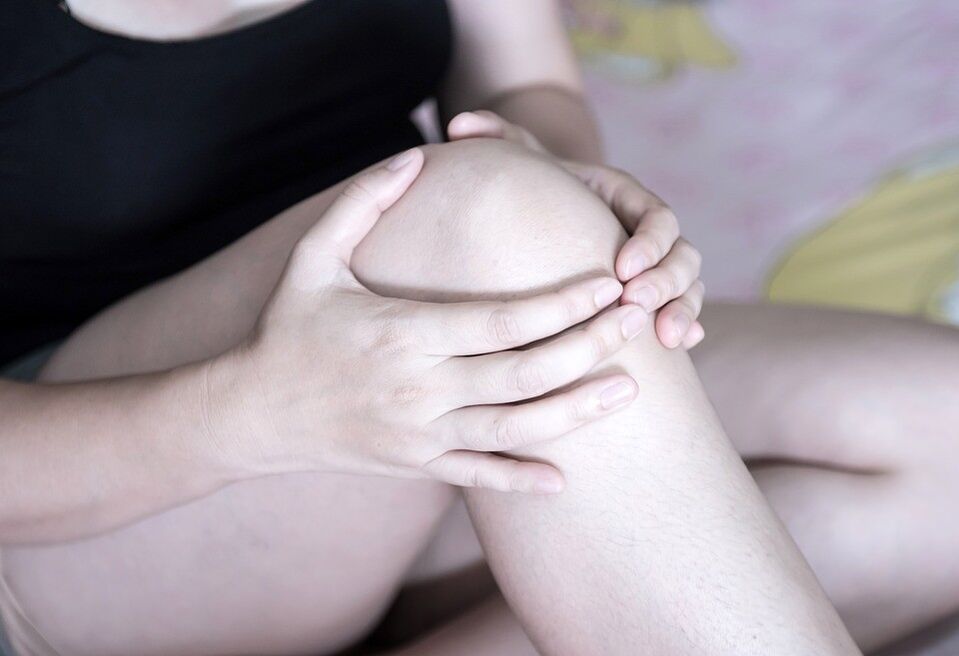
The course of osteoarthritis of the knee joint
Knee osteoarthritis affects women more often than men. This disease often progresses after forty, but sometimes appears earlier, usually after injuries and in professional athletes. More complex and severe gonarthrosis occurs, as we wrote earlier, in obese women and people with severe varicose veins.
The onset of the disease is characterized by the appearance of mild knee pain. Often the pain occurs when a person has to stand on his feet for a long time, when he goes down and up the stairs. When a person lies down, the pain disappears, but when you have to stand up, the first steps become very painful for him.
There are three degrees of osteoarthritis of the knee joint
Osteoarthritis of the knee joint 1 degree
Grade 1 osteoarthritis of the knee is sometimes characterized by intense knee pain, but at the same time the bones forming the knee joint remain undeformed, but due to synovitis the knee may appear slightly swollen. If there is too much intra-articular fluid, it can spread to the popliteal fossa. This condition is called Baker's cyst. If you are diagnosed with such a diagnosis, you do not need to worry, this is not a cancerous neoplasm, it is reduced under the influence of drugs prescribed by a doctor.
Osteoarthritis of the knee joint of 2nd degree
Osteoarthritis of the knee joint of the 2nd degree begins 2-3 months after the onset of the disease. During this time, knee pain is usually worse. This pain no longer appears simply during exercise, but accompanies a person with all kinds of movements. Usually at this time a distinct crunch in the knee "joins" the pain in the joint. Grade 2 gonarthrosis of the knee, in addition to intense pain and crunch, is accompanied by a decrease in the ability to bend the leg at the knee. manifests: bone structures change shape and when palpated, the joint becomes hard and "rough".
Osteoarthritis of the knee 3 degree
Osteoarthritis of the knee joint of the 3rd degree is characterized by constant intense pain, it is even difficult to be in a supine position: he is forced to look for a position in which he could rest. The knees become sensitive to weather changes, the aching pains begin at night. Grade 3 gonarthrosis of the knee joint is accompanied by a final decrease in mobility, it becomes impossible for a person to bend the leg at the knee joint by more than 90 °. Sometimes with grade 3 gonarthrosis it is not possible to fully straighten the leg, one has to walk on slightly bent legs. In some cases, the deformity of the legs develops into an O-shaped or X-shaped shape. In extreme cases, it is necessary to treat high-grade osteoarthritis surgically.
Gonarthrosis of the knee: treatment. What is important to know when treating the knee with drugs
Despite the abundance of advertising promising a miraculous ointment for joint pain, you must understand that it is impossible to cure gonarthrosis by any method, an integrated approach is needed.
If you find the first signs of osteoarthritis in yourself, you should see a doctor as soon as possible. This can be an arthrologist, rheumatologist, orthopedist or, first, a general practitioner.
Osteoarthritis of the knee: treatment with NSAIDs
So, how to treat osteoarthritis of the knee joint? Usually, non-steroidal (non-hormonal) substances are used to treat the joints, which can alleviate the process of inflammation in the joint. Gonarthrosis of the knee is treated with those drugs that may have antipyretic, analgesic effects. Remember that medicines in this group should not be taken all the time. they are able to "mask" the symptoms of the disease. Please note: do not self-medicate, act only under the guidance of a competent specialist who is able to prescribe treatment based on the individual parameters of your body, taking into account the contraindications to the use of drugs.
In recent years, a new generation of drugs has been used in practice: they are selective agents that act in the same way as NSAIDs, but are less likely to cause unpleasant side effects and do not cause complications.
Osteoarthritis of the knee: treatment with chondroprotectors
In osteoarthritis of the knee joint, you can take substances that nourish the cartilage of the joint and restore its structure. These drugs are chondroprotectors. Such drugs are most effective if you have grade 1 gonarthrosis of the knee joint, because in extreme gonarthrosis there is almost nothing to recover: all the cartilage is practically destroyed. To get the effect of chondroprotectors, it is necessary to use for a long time: at least 2-3 courses of treatment, which usually takes a year and a half. Remember that although there are few contraindications for this group of drugs, their use should be agreed with your doctor.
Osteoarthritis of the knee: treatment with vasodilators
Vasodilator drugs are a good complex therapy in the treatment of osteoarthritis. They help restore the joint by improving blood flow and relieving spasms of small vessels. A nice bonus in the treatment of osteoarthritis of the knee joint, including vasodilators, can be the elimination of nocturnal pain in the damaged joint. If you want to achieve maximum therapeutic effect, vasodilators are best used with chondroprotectors, so that the nutrients of chondroprotectors will penetrate into the joint in larger quantities and will circulate more actively in it. Remember that the use of any medicinal substances must be agreed with your doctor.
Osteoarthritis of the knee: healing ointments and creams
Ointment for osteoarthritis is often used as a trap by traders for desperate patients. Remember that treatment with an ointment for osteoarthritis of the knee joint of extreme degree will not give effect, but in the initial stages the cream and ointment can significantly alleviate the condition. Ointments to relieve pain can be used to improve circulation in the joint. Such drugs help to eliminate painful spasm in the joint, increase blood circulation. You can also use ointments based on bee and snake venom. These ointments have an irritating effect that increases blood circulation to the damaged joint. Remember that many ointments based on poisons can cause an allergic reaction, so only a specialist should give permission for their use.
Therapeutic exercises for osteoarthritis of the knee joint
Therapeutic exercise in osteoarthritis of the knee is an effective method of treatment in combination with medication and physiotherapy.
You must remember that therapeutic gymnastics for gonarthrosis is the main method of treatment, as we can not strengthen the muscles and blood vessels of the knee joint and activate the blood supply with any drugs. In addition, therapeutic gymnastics is the most budget and most effective treatment that does not require unnecessary material costs.
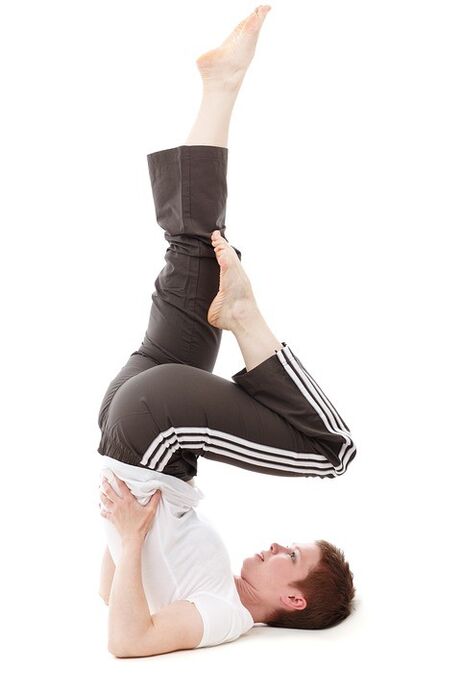
But it is necessary to deliberately perform exercise complexes for osteoarthritis: do not rush to do 200 squats a day or 100 kicks. Under no circumstances should you give intense dynamic load and instead of actively unfolding the flexion do static exercises. Unfortunately, most patients do not like to do only static exercises, because they are the most energy-intensive and tiring, but if you can last 2-3 weeks, practicing regularly, you will not only improve the condition of the knee joint, but also find an increase in strengthand increase productivity.
How to do it right
The exercises should be performed very smoothly and gently, stretching the ligaments and joints with light pressure. Do not allow severe pain during exercise. Focus on gradualness and regularity, do not rush things: the expected effect will be achieved only with constant moderate effort.
Remember that strength training should not be used for the first time after operations on the abdominal and thoracic organs, with high fever, critical days in women. It is absolutely necessary to pay attention not only to the joints, but also to exert stress on the abdominal muscles and back. This is required so that the main blood flow to the limbs passes through the muscles of the abdomen and back.
Exercise complexes are freely available on the Internet, try to do a variety of exercises for 30-40 minutes a day, every day, following our instructions.
We wish you perseverance and will to return to the previous ease of movement!
Physiotherapy for osteoarthritis of the knee joint
If you ask if it is possible to apply physiotherapy methods to treat osteoarthritis of the knee, we will answer - definitely!
Osteoarthritis of the knee: treatment - laser therapy
Laser therapy is the use of a light beam for therapeutic purposes, consisting of ultraviolet, infrared, red spectra of radiation. The effect of the laser has anti-inflammatory, decongestant and analgesic effects. The course of laser therapy usually consists of 15 sessions. Laser therapy is a relatively safe method of treatment, but it is impossible to cure osteoarthritis with a single laser, it is an additional method of treatment.
Osteoarthritis of the knee: treatment - cryotherapy
Cryotherapy is the effect of local cooling on the joint. There are two methods of cryotherapy: using a cryosauna and applying liquid nitrogen directly to the joint. The latter method is considered to be most effective in osteoarthritis of the knee joint. With the help of cryotherapy it is possible to improve the blood supply to the joint, to improve metabolic processes and to relieve muscle spasms. The course of treatment is usually 10-12 day sessions.
Osteoarthritis of the knee: treatment - magnetic therapy
Magnetotherapy - exposure to a magnetic field. Quite common physiotherapeutic method of treatment in hospitals and clinics. Exposure to a magnetic field has an anti-edematous effect, causes non-contact electrical muscle stimulation and reduces joint inflammation. The course of treatment is prescribed by a physiotherapist.
Osteoarthritis of the knee: treatment - ultrasound therapy
Ultrasound therapy - treatment with sound waves. Ultrasound for osteoarthritis helps to improve blood supply, reduce muscle spasms and has an analgesic effect. To enhance the therapeutic effect of ultrasound, a drug is applied to the affected joint. With the help of ultrasound waves, the drug penetrates more easily into the tissues.
Osteoarthritis of the knee: heat treatment
Thermal treatment for osteoarthritis of the knee is used in 1-2 stages of the disease. This method includes treatment with ozokerite, paraffin, mud. The latter deserve special attention: the treatment of osteoarthritis with mud can be done at home. It is necessary to dilute the healing mud with water and heat it to a temperature of 60 °, then mix the resulting mass with unheated mud, cool to 38-42 ° and apply a layer 2-3 cm thick on the affected joint. Cover the mixture with tarpaulin and a warm blanket. Leave on for 30 minutes. Perform the procedure every other day with a course of 10-12 procedures.
Diet and herbal medicines for osteoarthritis of the knee
Diet in osteoarthritis is an important factor for successful treatment. But we must understand that the development of osteoarthritis is not associated with any peculiarities of nutrition, but it is overweight that contributes to the appearance of osteoarthritis of the lower extremities. Nevertheless, you need to lose weight properly: in no case do not starve and do not sit on raw diets, because, as you know, after leaving solid diets, the weight accumulates again and often in even greater quantities.
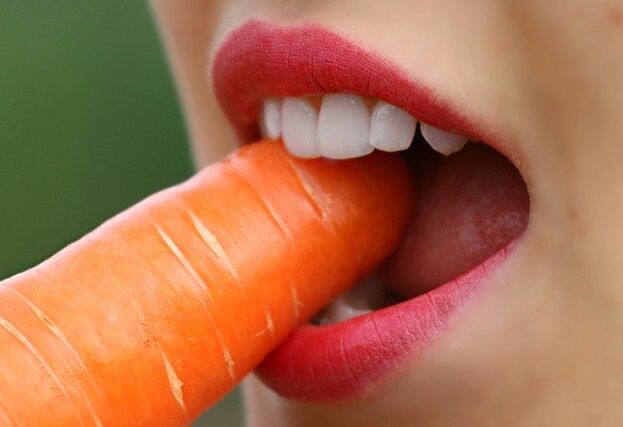
We need to know that being overweight is also a disease, but it can and should be treated. Obesity disrupts the regulation of appetite and satiety centers, but it is possible to "point them in the right direction. "
First, you need to realize that there is a problem that is often related to poor eating habits. Second, you need to learn to set realistic goals. Weight loss by 10-15% compared to baseline is an excellent result. Believe me, even if you lose even 5% of the original, you will immediately feel relief: there will be a drop in blood pressure and the condition of the joints will improve.
Aim to lose weight
In any case, if you have set a goal to lose weight, then you will need to reconsider your diet, composition and amount of food consumed. Cut down on pastries, baked goods and any "fast" carbs.
For starters, we recommend trying a simple way of eating food. Prepare your usual diet by placing your regular serving on a plate. Now eat only half of the food on your plate. You will soon notice that you just eat the whole portion out of habit, even though you need very little to satisfy your hunger. Even if you are hungry, eat slowly half of your portion and rest for 10 minutes. You will be surprised that after this time you just do not want to finish the rest: the hunger is gone, and with it the frantic desire to eat everything. After two months of such a "shortage" you will see a noticeable result. Try it!
Along with proper food intake, one should not forget about sufficient fluid intake. Those people who do not have severe cardiovascular and kidney disease, as well as those who do not suffer from edema, can safely increase the amount of fluid they drink to 2 liters per day.
Alternative treatment for osteoarthritis of the knee
Herbal remedies for osteoarthritis. It is important to note that infusions and decoctions for osteoarthritis help less than the above methods, but they can have a relative benefit.
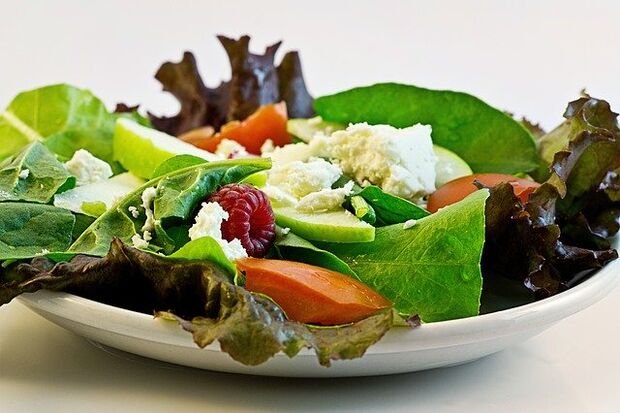
During the month you can take one of the following infusions:
remember that you only need to take each infusion or decoction separately and then replace it with another. Don't drink it all at once!
Birch decoction for osteoarthritis
Decoction of birch for osteoarthritis: 1 tablespoon of birch buds should be poured with a glass of boiling water, boil the mixture on low heat for 15 minutes and leave to simmer for 1 hour, covering the container warm. After an hour you should strain and add the broth with boiled water to the original volume. Take a quarter (1/4) cup infusion 4 times a day, one hour after meals for a month.
Linden infusion for osteoarthritis
Linden infusion for osteoarthritis: 3 tablespoons of linden flowers should be poured a glass of boiling water, boil on low heat for 15 minutes, then cool and filter. Take warm infusion of 1 cup 3 times daily after meals for 3 weeks.
Burdock decoction for osteoarthritis
Burdock decoction for osteoarthritis: 1 tablespoon of burdock roots should be poured with 1 cup of boiling water, simmer for about 30 minutes, stirring often, then the broth should be cooled to room temperature and filtered. Take the broth warm in half (1/2) cup 3 times daily before meals for a month.
Infusion of alder in osteoarthritis
Alder tincture for osteoarthritis: 2 tablespoons of gray alder cones (Alnus incana) should be poured with 1 cup of boiling water, kept on low heat for 15 minutes, then cooled and filtered. Take a third (1/3) cup infusion of fir cones 3 times a day for half an hour before meals for a month.
Collection of medicinal herbs for osteoarthritis
Collection of medicinal herbs for osteoarthritis: mix in equal parts willow bark, parsley roots, black elder flowers and nettle leaves, cut thoroughly. 4 tablespoons of the mixture is poured with 1 liter of boiling water and boiled over low heat for 5-10 minutes, then leave for 2 hours and drain. Take this collection half a cup 4 times a day for half an hour before meals. The course of treatment is 1 month.
Conclusion
Despite the fact that osteoarthritis is a very unpleasant disease, when you face it, it is necessary to draw the right conclusions from the disease, reduce negative emotions, start fighting for your full physical and spiritual health, following the recommendations we have proposed. . Then you will definitely beat the disease!






























